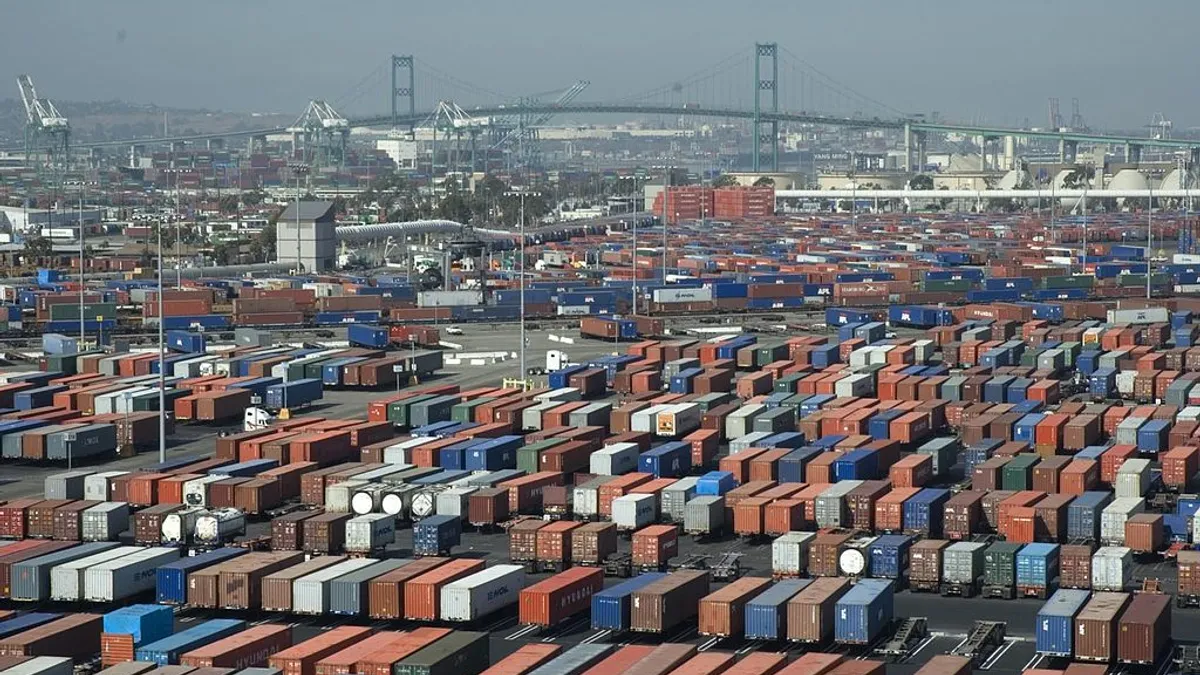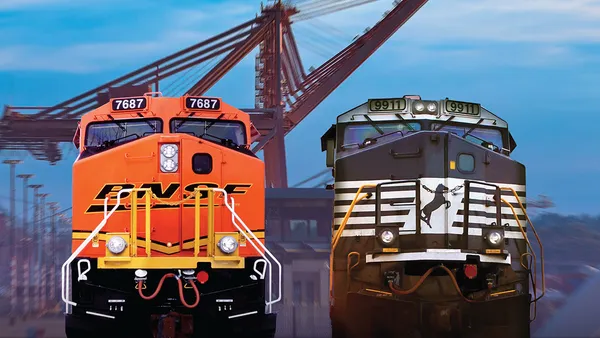Dive Brief:
- Hapag-Lloyd expects the current congestion at West Coast port facilities to continue into at least February, according to a recent update from the carrier.
- The back up has resulted in 35 ships currently anchoring away from the California ports of Los Angeles and Long Beach awaiting berthing spots, according to the notice, which also mentioned increased dwell times at the New York port facility.
- Once ships berth, the congestion continues on land where equipment shortages have hampered rail operations and high demand have made truckers hard to come by, according to Hapag-Lloyd.
Dive Insight:
It's a new year, but port facilities are still dealing with the same increased import volumes that strained operations in the back half of 2020.
And the high volume levels are expected to continue, according to Port of Los Angeles' forecast, confirming Hapag-Lloyd's expectation of continued congestion through February. Volume at Port of Los Angeles is expected to be up more than 80% YoY between Jan. 17 and Jan. 23, and up nearly 148% YoY between Jan. 24 and Jan. 30.
The uptick in volume has resulted in nearly a quarter of cargo experiencing a dwell time of greater than five days between September and November, according to the latest numbers available from the Pacific Merchant Shipping Association.
Hapag-Lloyd specifically noted that the port facilities have been slowed in part by impact of COVID-19 on labor availability.
The labor shortages affect turnaround time for truckers at all terminals, as well as "inter terminal transfers, the number of daily appointments available for gate transactions and generates delays in our vessels operations," the update reads.
Labor availability has been a challenge across industries in recent months due to the pandemic. Some survey respondents in the most recent Institute for Supply Management manufacturing report noted that labor availability in December was worse than at any other point in the pandemic.
This cross-industry labor shortage has exacerbated issues at the West Coast ports, as warehouses in the region have similarly struggled with labor, Jerry Critchfield, vice president of transportation at Weber Logistics noted in a blog post.
Critchfield pointed to a few options that shippers have to help mitigate congestion issues, which include partnering with a drayage provider that owns its own chassis and has an automated appointment system. He also suggested looking into "wheeled container" options with ocean carriers, in which they commit to providing containers and chassis.
An impressive uptick in imports is the cause of the congestion. The latest figures show that a large number of the imports is driven by sourcing from China.
"The surge in shipping into the U.S. in December 2020, which included a 20.6% increase in containerized freight ... was driven in large part by a 34.7% rise in shipments from Chinese ports," S&P's Panjiva said in an emailed research note.
As containers continue to pour into the country, some expect the congestion to continue even beyond the February date floated by Hapag-Lloyd.
"Extra-loaders added in December have provided much needed capacity in the market," Laufer Group International said in a market letter this week. "However, with terminals in Southern California already operating near capacity, the additional volumes from extra-loaders, scheduled to depart before Chinese New Year will only extend the chaos well into March."















